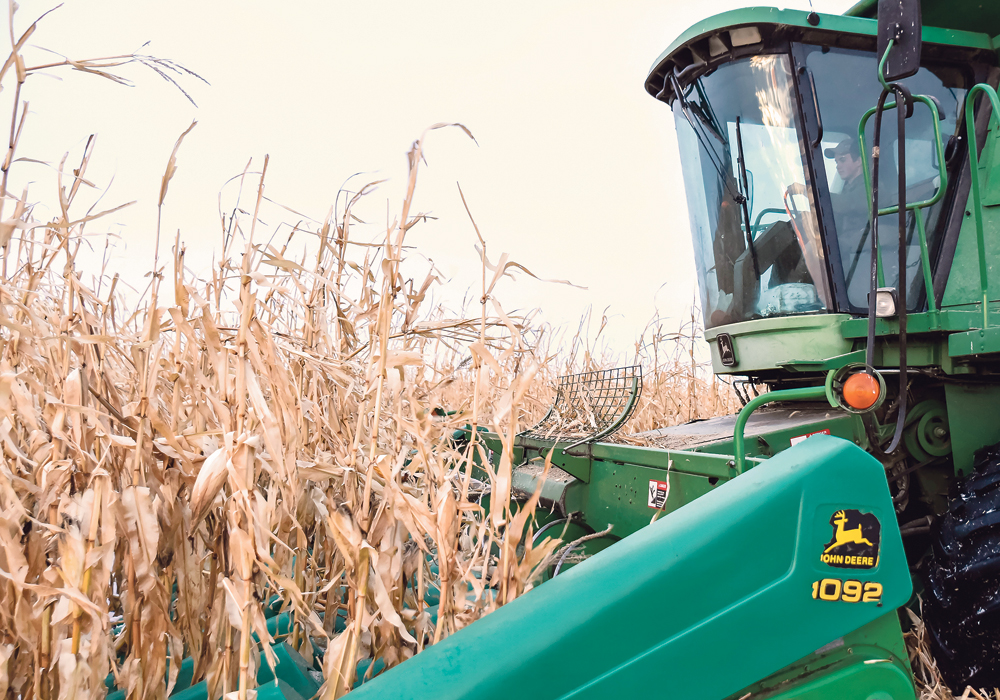Many farmers on the Prairies may get a late start to seeding next spring given the unfavourable harvest conditions this fall.
Crop specialists predict late starts will largely affect producers in Saskatchewan and Alberta, although some farmers in Manitoba may also seed later than normal.
What pans out will largely depend on the weather, they say.
“The amount of acres still out there is definitely significant,” said Cory Jacob, a crops extension specialist with the Saskatchewan agriculture ministry.
“Some producers have only five or 10 percent left to harvest, and some produces have a quarter or a third of acres. That is significant on an individual farm basis,” he said.
Read Also

Farming Smarter receives financial boost from Alberta government for potato research
Farming Smarter near Lethbridge got a boost to its research equipment, thanks to the Alberta government’s increase in funding for research associations.
There are about 2.5 million unharvested acres in Saskatchewan, he said, meaning producers will have lots of work to do by the time their fields thaw.
Most unharvested acres are in the east-central region, Jacob said.
In Alberta, 1.6 million insured acres are unharvested, said Emmet Hanrahan, a senior manager at Agriculture Financial Services Corporation (AFSC).
He said the number of unharvested acres is significant, adding the majority of them are located in the Peace region. There are also some pockets in the south, he added.
“There is still a considerable amount of crop,” Hanrahan said. “There could be spring seeding delays. It depends on the spring weather, but farmers will be under pressure, for sure.”
Manitoba managed to get most of its crop off, though there are chunks of unharvested canola, silage corn and grain corn.
Dane Froese, an industry development specialist for oilseeds with Manitoba Agriculture, said less than 200,000 acres of canola likely remain unharvested.
There would be about 63,000 acres of silage corn still remaining, he added.
“While there is still some crop left out in the field, we are in positions where spring operations could resume fairly normally, with the exception to deal with fertilizer placement, because most fall fertilizer and fall tillage largely didn’t occur,” he said.
Moreover, farmers in Manitoba will have to do work that’s largely meant for fall in the spring, he added.
“Harvest was stretched out by three to four weeks longer than what we would normally see for a normal year,” Froese said. “Everything got pushed back.”
Producers in Saskatchewan and Manitoba will also likely have to deal with fall work during spring.
As for crop salvageability, Jacob said producers in Saskatchewan can expect potentially lower grade canola. They could see yield and quality losses for wheat and flax, he said.
“Wheat would likely be a feed grade, given wheat was going into harvest at a lower grade,” he said. “Flax overwinters relatively well. It’s a wait-and-see game there.”
In Alberta, Hanrahan said crops are likely to come off at lower quality than they would have in the fall.
“Whatever happens in the winter and spring will affect quality,” he said.
In Manitoba, Froese said he doesn’t expect flax or cereals to be salvageable.
The province dealt with periods of wet and heavy snow in the fall, which severely lodged and broke crops down.
“To get it off in spring would be a real challenge and might not be worth the economic effort,” he said.
As for claims, the provinces are still completing inspections on claims and processing extensions of insurance.
Saskatchewan Crop Insurance Corp. has registered 3,500 extensions of insurance, which represents about 1.3 million reported acres that remain unharvested.
Hanrahan said AFSC doesn’t yet have up-to-date figures, but it projects claims could reach $700 million, which represents crops that would have also been damaged by hail and wildlife.
Manitoba Agricultural Services Corp. isn’t yet able to release the number of claims it plans on processing this year.


















